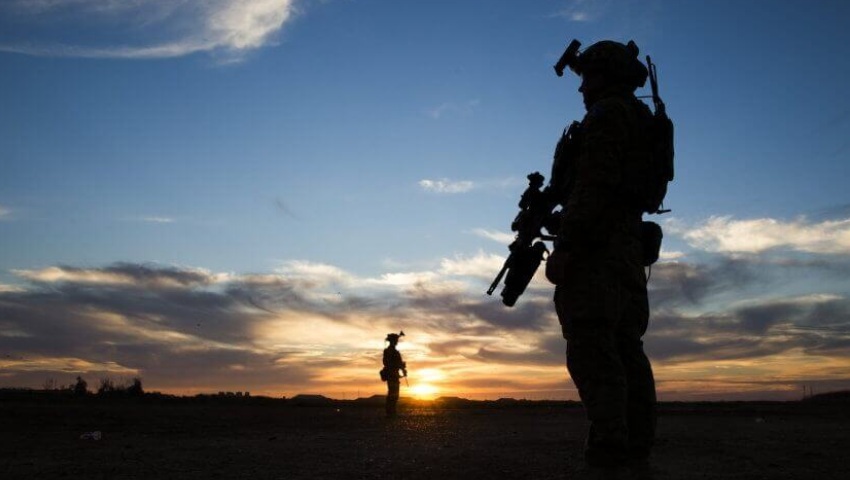Opinion: If the Australian Defence Force (ADF) is to keep pace with modern practices and digitally transform its operations, it will require an insurgency from within. It sounds controversial, but remember, there are many reasons to build an insurgency. There is one category – the reformist insurgency – that does not seek to replace the existing order, but instead compel it to undertake important reforms. The digital transformation of the ADF should be a reformist insurgency, writes Lieutenant Colonel (Ret’d) Caleb Walker, vice-president of defence and government at WithYouWithMe.
To continue reading the rest of this article, please log in.
Create free account to get unlimited news articles and more!
The ADF has several competing priorities. Hidden in the background is the exponential capability gap in the digital domain. In essence, the rest of the world is adapting faster every year in this domain, and the ADF is struggling to keep up. The conflicts of today and tomorrow are won by those that can master the digital space. For those following recent conflicts, they only need to look at digital sophistication of the 2020 Nagorno-Karabakh war between Azerbaijan and Armenia. These two countries are economically, very tiny, but were able to deploy combat drones, sophisticated surveillance, coordinated misinformation via social media and targeting of ballistic missiles. Interstate conflicts, criminals and terrorists fight and win in the digital space.
ADF leadership are often hamstrung on the purchase of new hardware. Defence acquisition programs are complicated, over budget and under delivering. The battlespace continues to evolve during the procurement process, and equipment and infrastructure is often obsolete before coming into service. Procurement is political, complex, and political. Yes, I said political twice. If you read Christian Brose’s book The Kill Chain, you will see that traditional procurement focuses on hardware – when it needs to enable software. Improving the kill chain in iterations at the edge is critical.
We can’t hire 500 software engineers that have five to 10 years’ experience to build this. Digital workers are expensive, they don’t want to work on Army projects and don’t understand our problems. More importantly, every government department is competing for the same talent. The Australian government has embraced the Secure Cloud Strategy and is spending billions of dollars migrating legacy systems to the cloud. The ADF needs to develop and retain in-house talent to ensure the longevity and security of our digital future.
We can’t rely on increasing the Royal Australian Corp of Signals and hope they solve this problem. The ADF is struggling with a personnel shortage, and it takes a bold recruit to leave their software engineering degree or their six-figure salary in a technology company to start basic training. The other side of this equation is the retention issues of the Signals trade; once trained and experienced, “sigs” can find a job outside the military almost immediately.
The digital insurgency is not dependent on a few key positions; it is important to mobilise the entire population. Most software companies have made their platforms user friendly with low or no code solutions. The insurgency can leverage these tools to scale their solutions and build momentum.
It is a mistake to expect senior Defence leadership to build the talent for us. The ADF is stretched; the Army, Navy and Airforce have a recruiting and retention issue. Senior leadership wants to ensure our forces are ready for the next fight. The Army for example will need to train a massive influx of recruits in coming years while trying to understand the larger tectonic shifts that are under their feet.
So, how do we wage a digital insurgency? The first step is to conduct a pre-insurgency stage – organise the movement, focus on the grievance, find emerging leaders, create a group identity, recruit members to your cause.
The grievance is simple – we live in 2022, but our office is in 1998. Why am I using Excel spreadsheets to capture data? Why are we sending information by email to each individual person? Why are staff officers chasing information for weeks for a PowerPoint that is out of date once the data is inputted? Why do most soldiers not have access to any information?
We then need to message that grievance to drum up support. Once leaders emerge who are willing to support and champion the cause, help them recruit more insurgents and fund the insurgency. The Australian Army needs access to Office 365 and tools that will automate most of the Army’s administration. Applications can be built on PowerApps that also work on a personal phone.
Recruiting and training can happen simultaneously to build these digital solutions and protect them from cyber attacks. Don’t wait on the hardware or the recruiting of specialised talent. Start training your soldiers on how to fight in the insurgency. They can build solutions on Office 365; they can conduct data competitions. We can automate paperwork and administration; we can have teams learn how to hack networks. Start small, show success, and then invest more.
Lieutenant-Colonel (Retired) Caleb Walker spent 20 years in the Canadian Army, including three tours of Afghanistan where he was awarded the Chief of Defence Staff Commendation. His last role was the Command of the Army’s Chief Action Group. He wrote the Managed Readiness System Review in 2019. He is now the vice-president of defence and government at the Australian veteran-led digital skills tech company WithYouWithMe.

 Login
Login







